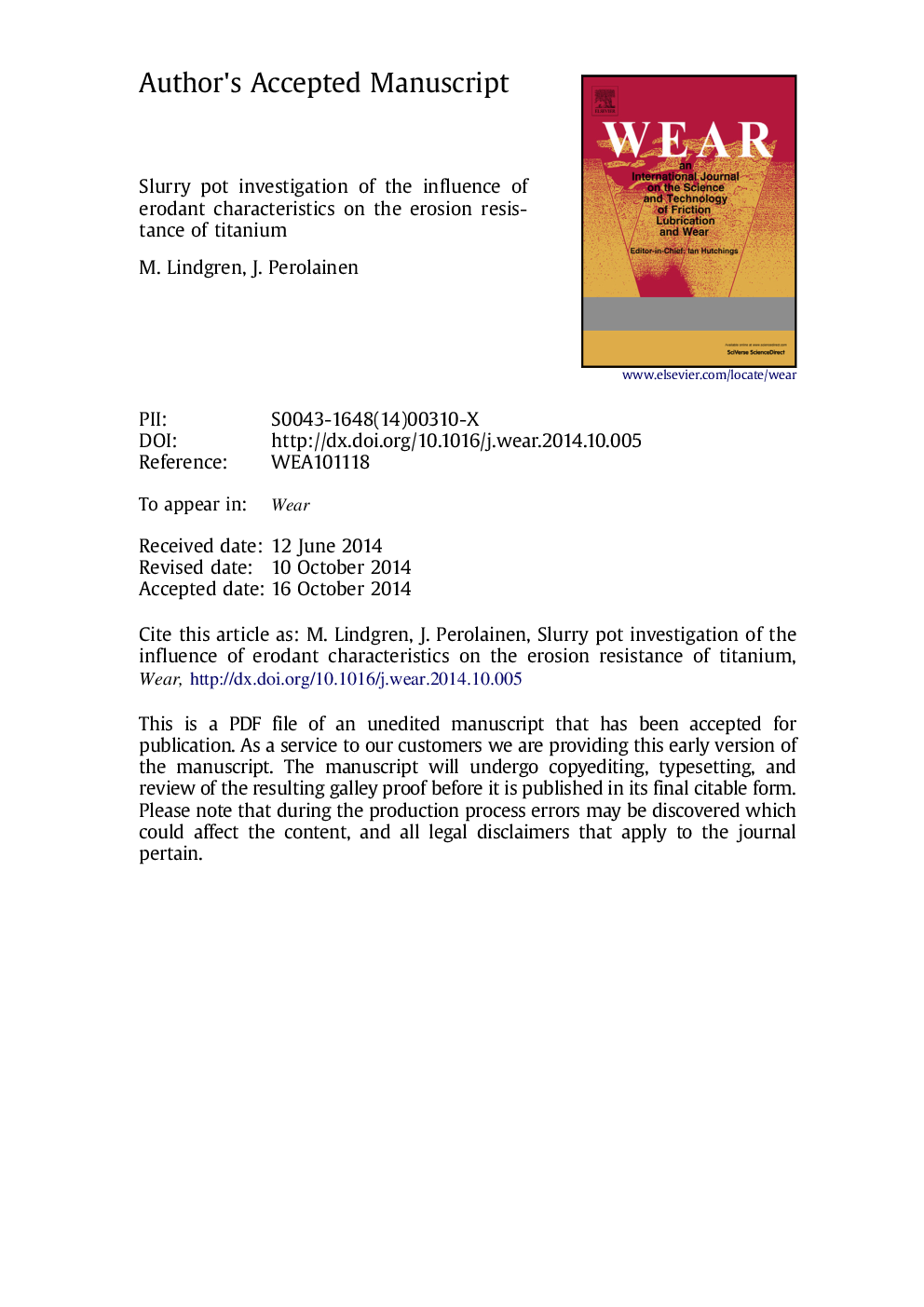| Article ID | Journal | Published Year | Pages | File Type |
|---|---|---|---|---|
| 7004494 | Wear | 2014 | 13 Pages |
Abstract
Titanium is used as a construction material under the most demanding process conditions in hydrometallurgical industry where process equipment is subjected to erosion-corrosion. In order to understand complex erosion-corrosion behavior of titanium its erosion behavior needs to be understood first. Titanium (ASTM Grade 2) was eroded in a slurry pot tester under normal impact using nine different erodants with varying particle size and shape. The measured weight losses were compared to those of 316L stainless steel obtained under similar experimental conditions. The results showed that various erodants damaged the titanium surface as a result of several mechanisms including microcutting and crater formation. The induced weight loss was not solely dependent on the kinetic energy of the particles but their shape was also found to have an effect. Titanium showed slightly higher mass loss than 316L. The relative ranking of the severity of the erodants was found to be the same for titanium as for 316L stainless steel.
Related Topics
Physical Sciences and Engineering
Chemical Engineering
Colloid and Surface Chemistry
Authors
M. Lindgren, J. Perolainen,
